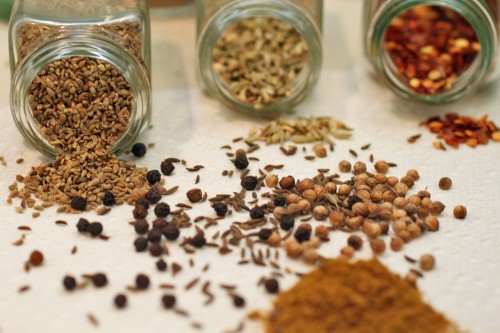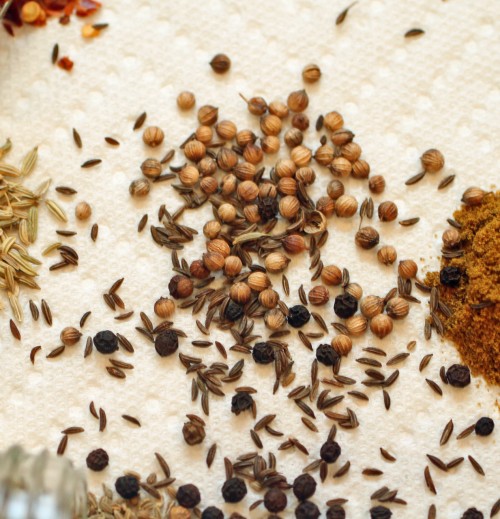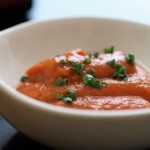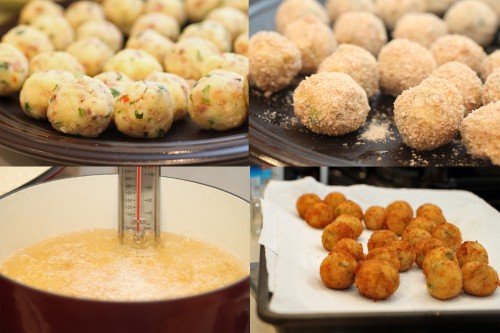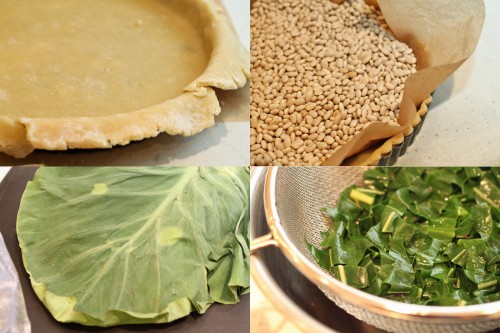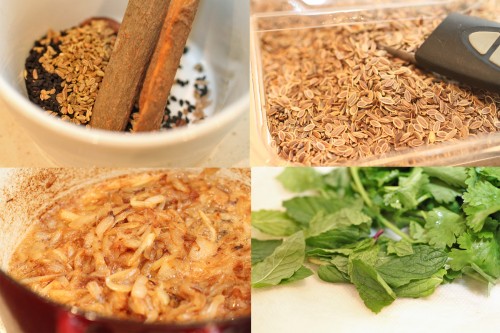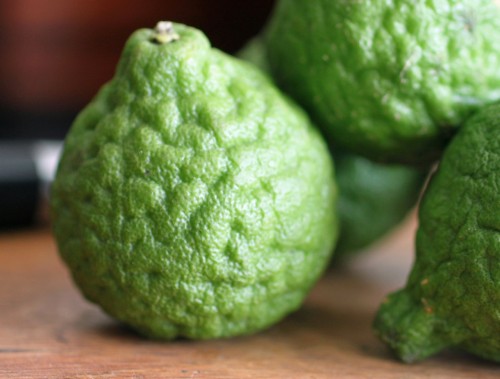Lamb Biryani
So I’m going to disclaim this recipe by pointing out that I generally try to showcase recipes that are relatively easy to recreate in the home. But every now and then, in order to achieve that superlative dish or in keeping with the authenticity of a food, the recipe requires a little more blood, sweat and tears…this happens to be one of those. The spice list alone is daunting! It looks like the kitchen sink (of spices, so to speak) is thrown in here but I swear that it is all additive to the flavor…
My mother-in-law is to blame. You see, this is a celebratory food, had at weddings or other special occasions, and so a lot of time and care is taken with the preparation. She had this at our wedding celebration a few years back and recently developed a craving. I promised to show her how to make this and so created this slightly modified recipe for her (yes, it could get even MORE complicated).
The dish originated in Persia but was brought by traders to South Asia where it’s been popularized. It’s eaten all over the region as well as in the Middle East. There are a million different versions out there – meat, chicken, mutton, game, fish, vegetables, potatoes, egg, different spices, nuts, and dried fruits. Each family has its own secret ingredients and preferences, and I’m sharing mine with you…
At first glance, this looks a lot like pilau, but the flavors are completely different. This is a layered casserole – with a rich thick meat stew forming the base and rice, fried onions, nuts, saffron and other spices layered on top. The dish is rich and heady, not so much from heat but the spice blend packs a punch. The meat is cooked until falling apart, the fried onions a bit crispy, soft rice texture and then some crunch from the almonds. This is the type of dish that sits in the fridge and can be eaten for days as its taste improves…enjoy!
Ingredients
3 lbs trimmed boned lamb shoulder or beef chuck, cut into 1 ½- to 2-inch cubes
2 medium white onions, cut into thick strips
4 black peppercorns
4 cloves
2 cinnamon sticks
3 black cardamom pods, cracked open
1 tsp cumin seeds
1 tsp nigella seeds
½ tsp aniseed
1 tsp dill seeds
2 crushed, dried bay leaves
2 pinches of saffron
1 tsp garlic powder
¾ tsp turmeric
1 ½ tsps chili powder
¾ tsp ground fenugreek
1 tsp ground cumin
½ tsp ground coriander
½ tsp paprika
1 or 2 green chilies, finely chopped (jalapeno or serrano)
6 cloves garlic, minced
2 tsps ginger, minced
2 plum tomatoes, chopped
1 cup chicken, beef or lamb stock
1/3 cup yoghurt, beaten*
¾ cup milk
8 to 10 mint leaves, chopped
Large handful of cilantro, chopped
lemon juice to taste
3 ½ cups of rice, half-cooked with 1 clove, 2 peppercorns, 1 cinnamon stick, and 1 black cardamom**
¾ cup sliced almonds, toasted
2 tsps black cumin seeds, toasted
Salt and freshly ground pepper to taste
Canola oil
Procedure
Preheat oven to 350° F.
Heat a dutch oven or other heavy bottomed pot that has a fitted lid over medium-high heat. Season cubed lamb or beef generously with salt and pepper. Add a few tbsps of oil to coat the bottom of the pan, and sear the meat for 2 minutes per side in batches to avoid overcrowding the pot. You want to develop a nice brown and overcrowding will steam the meat. Remove to a plate and set aside.
Turn heat down slightly, and add the onions to the same pot. You want to brown the onions to develop the signature taste of biryani. Cooking time will vary for this, but it takes about 10 minutes, stirring frequently. Remove onions to a separate plate.
Add all of the whole and ground spices (use only 1 pinch of the saffron), chilies, garlic and ginger and cook for 3 to 4 minutes being careful not to burn (reduce heat if necessary). You are looking for a change in the smell, a toasted nuttiness that will signify the spices are cooked.
Add back in the meat (along with any juices), half of the onions (reserving the other half for later), as well as the tomato and stock. Bring mixture up to a boil, cover tightly and place in the oven. Cook for an hour. Remove from the oven, stir in the beaten yoghurt, and place back in the oven for another 30 minutes.
In the meantime, heat the milk in a small saucepan over medium heat until simmering. Add the saffron and turn off the heat. The saffron should infuse the liquid with its flavor and color, and we are going to pour this over the rice at the end.
Remove pot from the oven, place on the stovetop, take off the lid, and simmer on medium uncovered for another 5 to 10 minutes. You want to remove any excess liquid as the resulting stew should be pretty thick. Add in the chopped mint and cilantro (reserving some for garnish), add lemon juice and season to taste.
Layer half of the partially cooked rice right on top of the meat mixture. Cover with the remaining browned onions, half of the toasted almonds, and chopped herbs. Create another layer with the rest of the rice. Pour the saffron-milk mixture all over the top. Add the remaining toasted almonds as well as the black cumin seeds and chopped herbs. Cover tightly and place back in the oven for another 20 to 25 minutes until the rice is cooked through.
*It is a well-known “secret” that beating yoghurt with a whisk before adding it to a curry or stew will prevent it from breaking.
**When you partially cook the rice, remember to season with salt generously and include some of the whole spices for added flavor. If you are boiling or using a rice cooker, strain any excess water before adding it to the meat mixture.



























